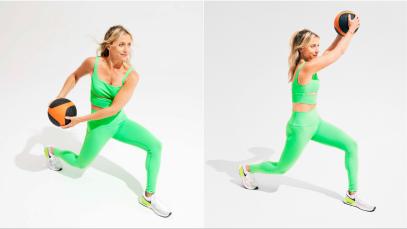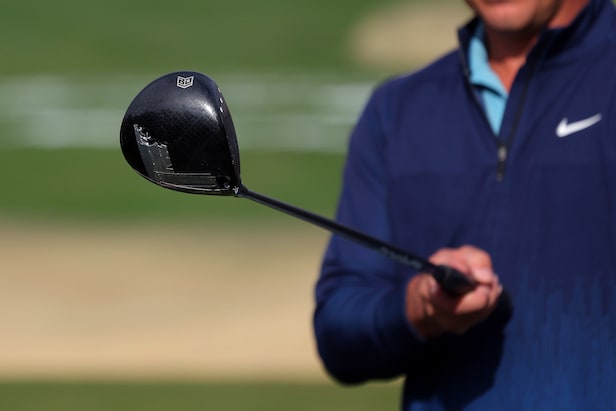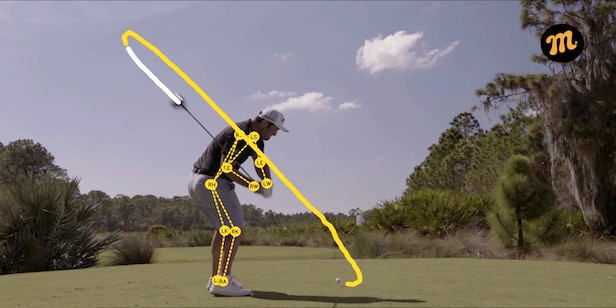To compress the ball, remember this secret move you can train in the gym – Australian Golf Digest

- by Admin
- September 20, 2024

If you’re wondering who hits the best approach shots with his irons on the PGA Tour, it’s really no contest. Scottie Scheffler is No. 1 or top five in 12 different ball-striking statistics tracked by ShotLink, including the all-important strokes gained/approach to the green. While his coach, Randy Smith, says everyone wants to focus on his idiosyncratic footwork during the downswing, a key component of his ability to compress iron shots is what is going on with his pelvis.
Many amateur golfers mistakenly think the hips rotate level in relation to the turf. But all good golfers, Scheffler especially, do something with their pelvis that is easy to remember as “tilting and turning,” says Golf Digest 50 Best Fitness Trainer Jonathan Avalos.
“What I see in most golfers is that the hips extend too soon, which causes your pelvis to move toward (anterior pelvic tilt) the ball and your hands to work up. This is opposed to having your pelvis moving away (posterior pelvic tilt) from the ball and your hands working down, which gives you space to continue rotating your hips through.”
MORE: This indoor drill created one of the best swings in golf—Ludvig Aberg explains how
In short, if you don’t tilt and turn with your hips, you can’t swing down into the ball and then continue moving downward into the turf. No downward path, no compression. “Ever wonder why your hips stall out in your downswing,” Avalos says, “That’s why.”
Avalos, one of Golf Digest’s Certified Fitness Trainers, says there are two great exercises you can do to train this move. One teaches your hips to stay back as you swing down so you have space for that downward strike, and the other primes the muscles and helps coordinate the tilt-and-turn action Scheffler utilizes.
More Golf Digest+ Fitness Golf Digest Logo Evidence says your club-over-the-head stretch is a complete waste of time. Do this instead  Golf Digest Logo Want more swing speed? These 4 simple moves will help train your fast-twitch muscles
Golf Digest Logo Want more swing speed? These 4 simple moves will help train your fast-twitch muscles  Golf Digest Logo 3 at-home exercises to get in golf shape for under $100
Golf Digest Logo 3 at-home exercises to get in golf shape for under $100
You’ll need a looped resistance band and a bar or similar object (broomstick, hockey stick, etc.) to stabilize yourself while you isolate theses lower-body muscles for training. The band should be thick enough to challenge your balance and ability to rotate. Check out the two videos below to see Avalos demonstrate these moves.
RESISTED PELVIC DOWNSWING ROTATIONS
From an athletic (golf posture), loop a resistance band around your waist so you can feel it trying to pull you laterally toward its anchored point. Now mimic the postion your body would be in at the top of your backswing, holding on to a bar or similar for stability. From here, try to rotate your pelvis slowly and in control, as if you were unwinding in the downswing in slow motion. The goal is to keep your upper body back as the hips turn against the resistance of the band.
RESISTED PEVLIC ROTATIONS IN POSTERIOR TILT
From an athletic (golf posture), loop a resistance band around your waist so you can feel it trying to pull your lead hip (left for right-handers) forward and toward its anchored point. Hold on to a bar for stability, arms extended. While keeping your hips back (think about your butt extending behind you), mimic the lower-body action needed as you would swing down into the ball.
The key here is to let the hips rotate slowly counterclockwise, while maintaining the posterior tilt of the pelvis. Don’t let the resistance band pull your hips toward the anchored point.
This article was originally published on golfdigest.com
The Latest News
-
December 21, 2024Ravindra Jadeja’s press conference Hindi-English row: What transpired during the Indian star’s interaction with Australian media | Sporting News India
-
December 21, 2024Coco Gauff declared one of the favourites to win Australian Open
-
December 21, 2024From delays to refunds: how Australia’s air passenger charter could affect your travel rights
-
December 21, 2024‘Dream come true’: Emotional Test bolter on shock call-up and classy act from man he replaced
-
December 21, 2024‘Got this wrong’: Former skipper criticises selectors’ call





